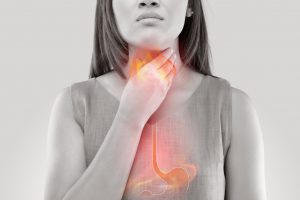Introduction
Vocal cord polyps and nodules are common benign growths that can affect the voice, particularly in people who use their voices frequently or at high intensity. They can significantly alter vocal quality, leading to hoarseness, strain, and fatigue, which can be distressing for professional voice users like singers, teachers, and public speakers. But the good news is that these conditions are treatable with a variety of methods tailored to each patient’s needs.
In this blog, I will explore the causes, diagnosis, and treatment options for vocal cord polyps and nodules. I’ll also highlight what to expect during recovery and how to take care of your voice to prevent recurrence.
Causes of Vocal Cord Polyps and Nodules
Polyps and nodules both result from vocal cord trauma, but the nature of the trauma and the way these growths form can vary. Nodules are typically symmetrical, callus-like growths that form on both vocal cords. They are most commonly caused by overuse or misuse of the voice. This could be frequent shouting, singing improperly without sufficient rest, or speaking loudly for extended periods without hydration. Nodules are more common in individuals like teachers, singers, or others who need to raise their voices frequently in noisy environments.
Polyps, on the other hand, tend to be unilateral, meaning they form on just one vocal cord. They are often larger and softer than nodules and can result from a single traumatic event such as shouting at a concert or a prolonged episode of vocal strain. Smoking and chronic throat irritation due to acid reflux can also contribute to the development of vocal cord polyps.
In both cases, the key factor is inflammation and damage to the delicate tissues of the vocal cords, leading to the formation of these growths.
Symptoms of Vocal Cord Polyps and Nodules
Patients with polyps or nodules typically present with a change in their voice. This change can vary from mild hoarseness to a complete loss of voice in severe cases. Common symptoms include:
- Hoarseness or breathy voice
- Vocal fatigue (difficulty speaking for long periods)
- Loss of vocal range, particularly in higher notes for singers
- Sensation of a “lump” in the throat
- Persistent cough or throat clearing
If left untreated, these symptoms can worsen over time, leading to more pronounced vocal damage.
Accurate Diagnosis: The Key to Effective Treatment
Accurate diagnosis is essential for developing a tailored treatment plan. The first step is a thorough consultation, during which I take a detailed patient history, paying attention to any habits or lifestyle factors that may have contributed to the vocal trauma. This conversation is crucial to understanding the demands placed on the patient’s voice and any predisposing factors such as smoking or acid reflux.
The cornerstone of diagnosis is high-definition video laryngoscopy combined with stroboscopy. This technology allows me to visualize the vocal cords in detail and observe how they vibrate during speech. The stroboscope produces slow-motion images of the vocal cords in action, providing valuable insights into how the polyps or nodules affect vocal cord vibration.
This diagnostic process helps distinguish between different types of growths and allows me to assess the extent of any damage. For example, nodules tend to cause symmetrical vibration irregularities, while polyps may have a more localized effect on one vocal cord.
Treatment Options for Vocal Cord Polyps and Nodules
Once the diagnosis is confirmed, I work with the patient to develop a treatment plan. Treatment can range from conservative approaches like voice therapy to surgical interventions for more severe cases.
- Voice Therapy
For many patients, particularly those with early-stage nodules, voice therapy is the first line of treatment. Working with a specialized speech and language therapist, the patient learns techniques to reduce strain on the vocal cords and improve vocal hygiene. Voice therapy may include exercises to:
- Adjust vocal pitch and resonance
- Improve breath support for speaking
- Develop efficient vocal fold closure
- Relax the muscles involved in speech production
Therapy also focuses on behavioral changes, such as proper hydration, voice rest, and avoiding irritants like smoke or allergens that can exacerbate inflammation. Many patients see significant improvement after several weeks of therapy, reducing the size of the nodules or eliminating the need for further intervention.
- Lifestyle Modifications
In addition to voice therapy, lifestyle changes play a critical role in treatment. Patients who smoke or have uncontrolled acid reflux may need to make adjustments to their daily habits to support healing. This could involve smoking cessation, dietary changes, and medications to control acid reflux, which can damage the vocal cords and contribute to polyp or nodule formation.
- Medical Therapies
In some cases, medical therapies such as corticosteroids may be prescribed to reduce inflammation and help resolve the swelling associated with polyps or nodules. Steroids can be useful in cases where conservative treatment needs an extra boost, but they are not a long-term solution and are usually part of a broader treatment plan.
- Surgical Intervention
For more advanced cases, or if polyps or nodules do not respond to conservative treatment, surgery may be necessary. My approach to surgery is highly precise and aims to remove the growths while preserving as much of the healthy vocal cord tissue as possible.
Using the latest microsurgical instruments and laser technology, I can carefully excise the polyp or nodule without damaging the surrounding vibrating tissue. The procedure is typically done under general anesthesia as a day case, meaning the patient can return home the same day.
Following surgery, I recommend one to two weeks of strict voice rest to allow the vocal cords to heal properly. This recovery period is crucial to ensure optimal results and minimize the risk of recurrence.
Post-Surgical Care and Recovery
The road to recovery doesn’t end with surgery. Post-surgical care is essential to ensuring long-term vocal health. After the initial rest period, patients usually continue with voice therapy to relearn proper vocal techniques and avoid future injury.
Regular follow-up appointments are also crucial to monitor healing and catch any signs of recurrence early. In some cases, I may recommend further lifestyle adjustments or medical treatments to address any underlying conditions like acid reflux or chronic inflammation that could contribute to new polyps or nodules forming.
Preventing Future Vocal Issues
Preventing the recurrence of vocal cord polyps and nodules requires a proactive approach to vocal health. This involves maintaining proper vocal hygiene, staying hydrated, avoiding excessive voice use, and seeking early intervention at the first sign of vocal strain. For professional voice users, regular check-ups and voice therapy can help ensure that the voice remains healthy and resilient over time.
Conclusion
Vocal cord polyps and nodules are common but treatable conditions that, with proper care, should not lead to permanent vocal damage. Whether through conservative treatment or surgical intervention, the key is early diagnosis and a personalized approach to treatment. With the right care, most patients can fully recover their voice and avoid future complications.
If you’re experiencing any symptoms of vocal strain, hoarseness, or other voice issues, don’t hesitate to schedule a consultation. Early intervention can make all the difference in protecting your vocal health.





